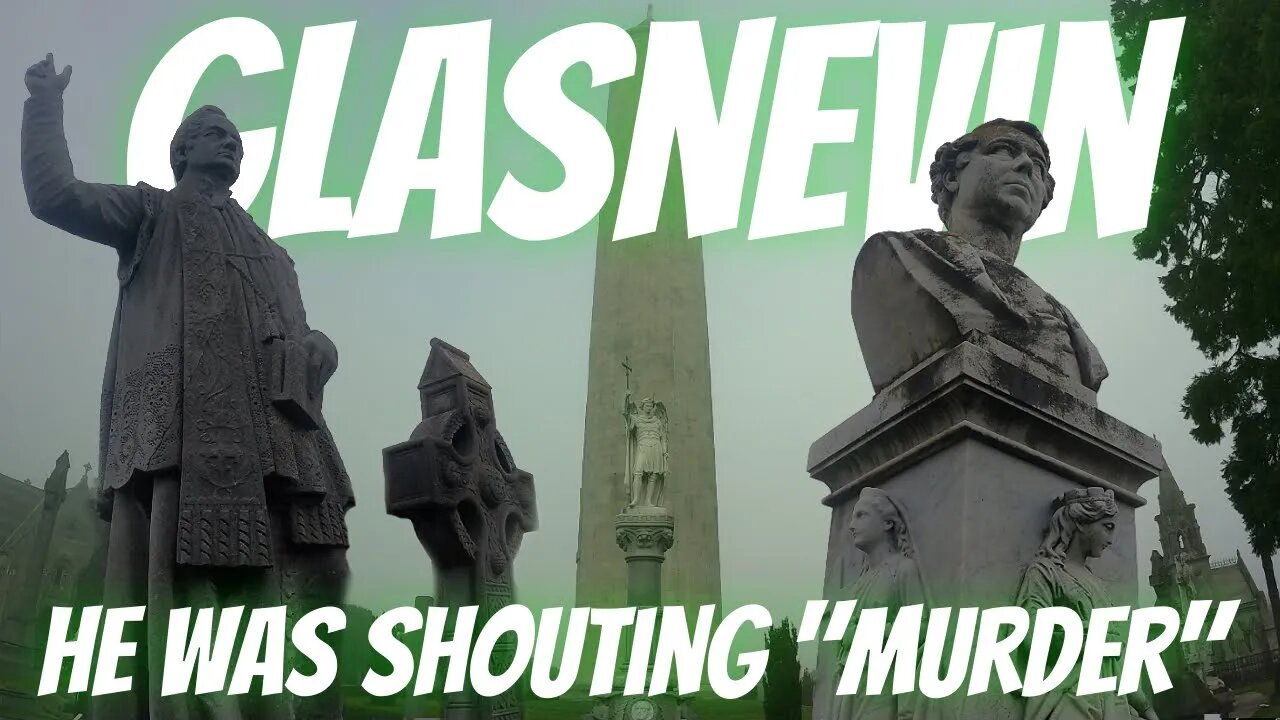Premium Only Content

Ireland's grandest cemetery | Man shouts at funeral | Glasnevin Part 1
Prior to the establishment of Glasnevin Cemetery, Irish Catholics had no cemeteries of their own in which to bury their dead and, as the repressive Penal Laws of the eighteenth century placed heavy restrictions on the public performance of Catholic services, it had become normal practice for Catholics to conduct a limited version of their own funeral services in Protestant churchyards or graveyards. This situation continued until an incident at a funeral held at St. Kevin's Churchyard in 1823 provoked public outcry when a Protestant sexton reprimanded a Catholic priest for proceeding to perform a limited version of a funeral mass. The outcry prompted Daniel O'Connell, champion of Catholic rights, to launch a campaign and prepare a legal opinion proving that there was actually no law passed forbidding praying for a dead Catholic in a graveyard. O'Connell pushed for the opening of a burial ground in which both Irish Catholics and Protestants could give their dead dignified burial.
Glasnevin Cemetery was consecrated and opened to the public for the first time on 21 February 1832. The first burial, that of eleven-year-old Michael Carey from Francis Street in Dublin, took place on the following day in a section of the cemetery known as Curran's Square. The cemetery was initially known as Prospect Cemetery, a name chosen from the townland of Prospect, which surrounded the cemetery lands. Besides the famous interred at Glasnevin, nearly 800,000 people have been buried in Glasnevin in unmarked mass graves due to the death toll from the Great Famine of the 1840s and a later cholera epidemic.
Originally covering nine acres of ground, the area of the cemetery has now grown to approximately 124 acres. This includes its expansion on the southern side of the Finglas Road with the section called St. Paul's. The option of cremation has been provided since March 1982.
O'Connell Tower in Dublin was built in 1855 to commemorate the Irish nationalist leader, Daniel O'Connell.
He led the campaign to end religious discrimination against Catholics, who had few rights in early 19th Century Ireland.
The tower shut in 1971 when it was damaged by a loyalist bomb but recently it has undergone extensive renovations.
The monument stands at 55m (180ft) in Glasnevin Cemetery in north County Dublin, where it commands "breathtaking" 360 degree views of the city and neighbouring counties.
#dublin #ireland #walking
Support the channel for the price of a coffee https://ko-fi.com/deadgoodwalks
-
 1:48:46
1:48:46
The Illusion of Consensus
1 month agoPsychedelic Therapy In a Political Landscape: NIH Funding & Bipartisan Support w/ Dr. Carhart-Harris
6.67K -
 LIVE
LIVE
I_Came_With_Fire_Podcast
6 hours agoChina Wrecks Itself, But America Helps, While Roblox Protects Predators and AI Use Plummets
606 watching -
 2:44:25
2:44:25
TimcastIRL
5 hours agoGavin Newsom Says He Will End Trump Presidency, Vows To Gerrymander California | Timcast IRL
156K71 -
 3:24:15
3:24:15
Barry Cunningham
9 hours agoCOULD PRESIDENT TRUMP HAVE A MUCH BIGGER REASON FOR TAKING OVER WASHINGTON D.C.?
68.9K86 -
 LIVE
LIVE
SpartakusLIVE
10 hours ago#1 MACHINE Can't Stop The GRIND
222 watching -
 5:27:38
5:27:38
Rallied
6 hours ago $2.54 earnedWarzone Solo Challenges All Day w/ Ral
46.7K -
 3:18:00
3:18:00
Alex Zedra
4 hours agoLIVE! Scary Games Girls Night
29.1K -
 45:07
45:07
MattMorseTV
6 hours ago $12.95 earned🔴Tulsi just DROPPED a BOMBSHELL.🔴
52.2K53 -
 8:06:17
8:06:17
Cripiechuccles
8 hours ago😁💚💙WEEDIE WED WITH CRIPIE💚💙GAMING AND WATCH PARTIES👌COME IN AND SAY HI!!:😁
17.1K2 -
 5:26:22
5:26:22
OhHiMark1776
6 hours ago🟢 08-13-25 ||||| #RumbleFightClub ||||| Variety
16.9K2